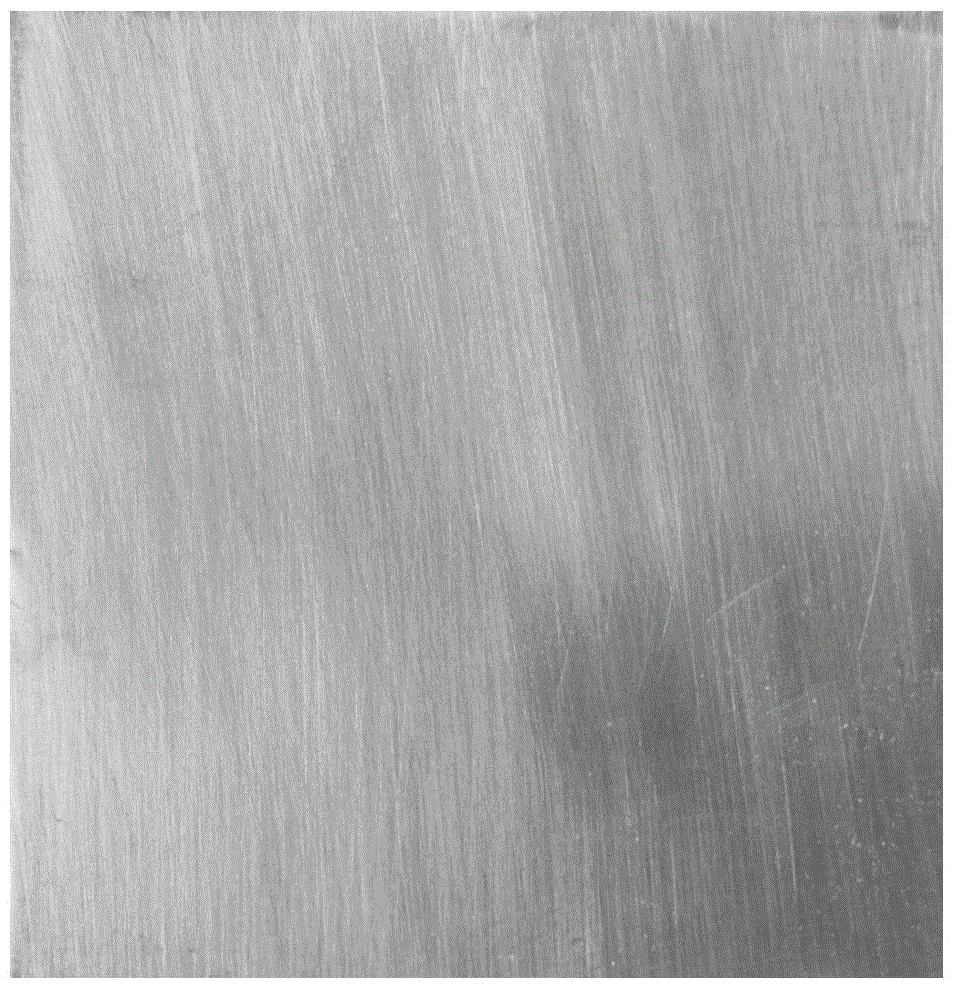Biological metal corrosion inhibitor and application thereof
A metal corrosion inhibitor and metal corrosion inhibition technology, applied in the field of corrosion inhibitors, can solve problems such as the preparation of metal corrosion inhibition by unseen bacteria, and achieve the effects of reducing production cost and maintenance cost, improving corrosion resistance and simple process method.
- Summary
- Abstract
- Description
- Claims
- Application Information
AI Technical Summary
Problems solved by technology
Method used
Image
Examples
Embodiment 1
[0056] The preparation of embodiment 1 biological metal corrosion inhibitor
[0057] The purchased bacterial strains are stored in -80°C marine bacteria broth containing 30wt% glycerol. Take 100 μL of the above broth and inoculate it in solid LB medium (placed in a 10cm diameter Petri dish). At 30°C, Fermented and cultivated in an incubator for 24 hours to obtain the biometal corrosion inhibitor and denote it as J1.
[0058] Take 100 μL of the purchased broth containing bacteria, inoculate it into 100 cc of liquid LB medium, and ferment and culture it at 30°C with 130 r / min shaking for 24 hours to obtain the biometal corrosion inhibitor, which is designated as J2.
[0059] Take 100 μL of the broth containing the bacteria purchased above, inoculate it into 100cc liquid medium (artificial seawater + 3g / L peptone + 1.5g / L yeast extract), and ferment and culture at 30°C and 130r / min for 24 hours, The obtained biometal corrosion inhibitor is denoted as J3.
Embodiment 2
[0060] The live bacteria concentration detection of embodiment 2 biological metal corrosion inhibitors
[0061] Get the biometallic corrosion inhibitor J1 that embodiment 1 prepares about 1mm 3 , add 1L of sterile seawater to dilute. Take 0.1mL of the diluted solution and add it to the prepared plate, then spread the bacterial solution on the entire surface of the plate with a sterile applicator stick, incubate at 30°C for 24 hours, count the number of colonies, and obtain the concentrations of viable bacteria in J1 as 8×10 9 CFU / g.
[0062] Take 0.1 g of the biometal corrosion inhibitors J2 and J3 prepared in Example 1 and add them into 1 L of sterilized seawater for dilution. Take 0.1mL of the diluted solution and add it to the prepared plate, then spread the bacterial solution on the entire surface of the plate with a sterile applicator stick, incubate at 30°C for 24 hours, count the number of colonies, and obtain the concentration of viable bacteria in J2 and J3 8×10 r...
Embodiment 3
[0063] Embodiment 3 measures the corrosion inhibition performance of A36 carbon steel
[0064] A36 carbon steel was used as the metal sample. Cut the metal sample into a square with a side length of 10 cm, weld the copper wire on the back, and then encapsulate the back with epoxy resin. The front side of the metal sample was smoothed with 2000 mesh sandpaper, cleaned in 95% ethanol, then deionized water, then soaked in 95% ethanol and placed under a UV lamp for 1 hour to sterilize.
[0065] The above two groups (4 in each group) of metal samples were taken respectively as the experimental sample group and the control sample group.
[0066] Experimental sample group: metal samples were placed in flasks equipped with sterile seawater respectively, and peptone was added to make the concentration of peptone in sterile seawater 3g / L; the biometal corrosion inhibitor J1 obtained in Example 1 was added to make The concentration of viable bacteria in the system was 10 5 CFU / g; plac...
PUM
 Login to View More
Login to View More Abstract
Description
Claims
Application Information
 Login to View More
Login to View More - R&D
- Intellectual Property
- Life Sciences
- Materials
- Tech Scout
- Unparalleled Data Quality
- Higher Quality Content
- 60% Fewer Hallucinations
Browse by: Latest US Patents, China's latest patents, Technical Efficacy Thesaurus, Application Domain, Technology Topic, Popular Technical Reports.
© 2025 PatSnap. All rights reserved.Legal|Privacy policy|Modern Slavery Act Transparency Statement|Sitemap|About US| Contact US: help@patsnap.com



